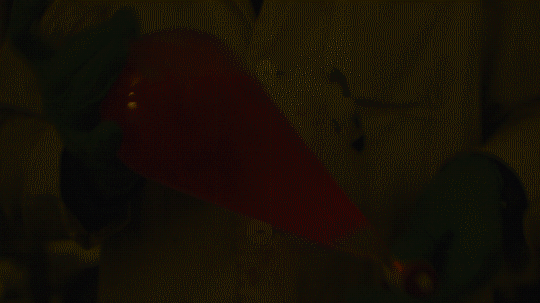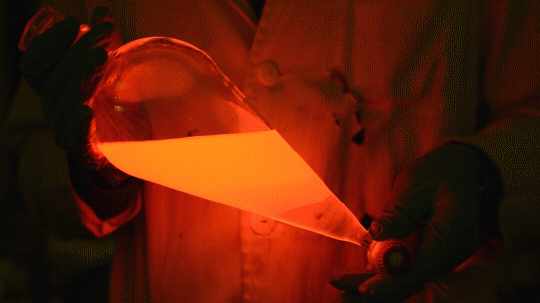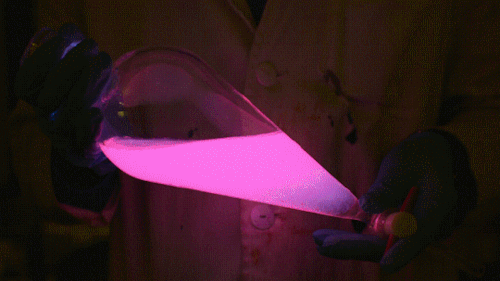And Now, We Shall Pretend To Be Mathematicians.
And now, we shall pretend to be mathematicians.
Quantum mechanics lecturer on solving the Hermite equation (via mathprofessorquotes)
More Posts from The-sleepy-chemist and Others
How Smells Trigger Memories By SciShow
SciShow explains how smells can bring back early memories – even memories that your brain didn’t know you had.
Hosted by: Hank Green

Not just one, but seven Earth-size planets that could potentially harbor life have been identified orbiting a tiny star not too far away, offering the first realistic opportunity to search for signs of alien life outside of the solar system.
The planets orbit a dwarf star named Trappist-1, about 40 light years, or some 235 trillion miles, from Earth. That is quite close in cosmic terms, and by happy accident, the orientation of the orbits of the seven planets allows them to be studied in great detail.
One or more of the exoplanets in this new system could be at the right temperature to be awash in oceans of water, astronomers said, based on the distance of the planets from the dwarf star.
“This is the first time so many planets of this kind are found around the same star,” said Michael Gillon, an astronomer at the University of Liege in Belgium and the leader of an international team that has been observing Trappist-1.
Continue Reading.
Psychology: Why do people do the thing?
Sociology: How do people who do the thing interact with other people who do the thing?
Anthropology: Who else has done/is doing the thing and where are they?
Philosophy: What is the meaning of the thing? Where did the thing come from?

Maple syrup could help fight bacterial infections, Canadian scientists find
Maple syrup is once again making headlines for being the rockstar condiment that every Canadian knows it is, but it’s not the culinary world that’s buzzing this time — it’s the medical world. Newly released research from McGill University in Montreal suggests that concentrated maple syrup extract may actually help fight bacterial infections, potentially reducing the need for antibiotics around the world. “Combining maple syrup extract with common antibiotics could increase the microbes’ susceptibility, leading to lower antibiotic usage,” reads a press release issued by the university Friday. “Overuse of antibiotics fuels the emergence of drug-resistant bacteria, which has become a major public-health concern worldwide.”
Continue Reading.
20 THINGS YOU SHOULD DO EVERYDAY 1. Wake up earlier. Not only does this improve productivity but it also gives you more time to make a good, hearty breakfast. 2. Make your bed. Let’s be real, being welcomed to a tidy bed after a long day at work/school (or a long day in general) is probably the best feeling anyone will ever experience. 3. If you want, spend a little more time on your appearance. Take some time choosing an outfit, applying make up or whatever. Do what helps you boost your confidence and self-esteem. 4. Stay hydrated, folks. Keep a bottle of water with you wherever you go. 5. Stretch everyday or start yoga (or do both, why not?) 6. Create a playlist consisting of songs that make you happy and listen to it. Listen to songs for the mood you want to be in, instead of the mood you are in. 7. Compliment at least one person per day. This could be an acquaintance, co-worker, class mate, stranger, whoever! 8. Use your manners. If someone holds the door for you, lets you go first etc, they did it voluntarily and didn’t have to do it, so a “thank you” wouldn’t hurt. 9. Eat your fruit and vegetables and always choose the healthy version over the junk food. 10. Have a good laugh. Catch up with friends, watch some ‘Parks and Recreation’, go see some stand-up comedy, reminisce about funny moments that have happened to you. You don’t need to be a doctor to know that humour has many benefits. 11. Be optimistic. Always look at the positives. There’s no point on focusing on the negatives because that isn’t going to help anyones mood at all. 12. Exercise. It doesn’t have to be anything to intense. A run around the block, a walk with your dog or even a ‘Just Dance’ session will do the job. 13.Bring a book/magazine or collect the daily newspaper with you. Spend you spare time reading. 14. Try and learn something new everyday. This can either be an interesting fact you saw online or a new skill someone taught you. 15. Help others when you are able to. Help your classmates with school work or offer to help you struggling neighbour lift those heavy objects. 16. Stop procrastinating. No matter how unmotivated you are to, push yourself and complete what you need to complete. Do what you gotta do. You know you’ll love yourself for doing it. 17. Drink some tea, because that stuff is goooooood (and also beneficial). 18.Make time to do things that help you relax, whether that’s painting, having baths, doing you nails or going for a run. 19. Don’t dwell on your mistakes, but instead grow and learn from them. 20. And lastly, be kind to yourself. If you love who you are, everyone else will
Chloe for Native Moon Magazine (via nativemoonmag)



Imperial Tortoise Beetle - Stolas imperialis
With only 6-12 mm in length, the Imperial Tortoise Beetle, Stolas imperialis (Coleoptera - Chrysomelidae), is truly astonishing by the intense blue color of its body and its elytral punctuation. This species, which is one of 181 that are grouped in the genus Stolas, is poorly known and only registered from Brazil.
References: [1] - [2] - [3]
Photo credit: ©Sergio Monteiro | Locality: Santa Catarina, Brazil (2014)
Science never goes out of STYLE! And we prove it with this scientific a capella cover song!
Submitted by asapscience.
Submit some science here! :)






My new favorite: Solvatofluorescence of Nile Red
Solvatochromism is the ability of a chemical substance to change color due to a change in solvent polarity, so it has different color in different solvents.
Also in some cases, the emission and excitation wavelength both shift depending on solvent polarity, so it fluoresces with different color depending on the solvent what it’s dissolved in. This effect is solvatofluorescence.
On the video the highly solvatochromic organic dye, Nile Red was added to different organic solvents and was diluted with another, different polarity organic solvent. As the polarity of the solution changed, the emitted color from the fluorescent dye also varied as seen on the gifs above and as seen on the video:
To help the blog, donate to Labphoto through Patreon: https://www.patreon.com/labphoto
Lab life
Constantly using acetone to wash your glassware which ends up making your nails super brittle 💔
My favorite thing from this year: playing with the glowstick reaction using TCPO (bis(2,4,6-trichlorophenyl) oxalate).
The glow stick contains two chemicals and a suitable dye. One of the chemicals is a diaryl oxalate (in this case TCPO, or bis(2,4,6-trichlorophenyl) oxalate), the other one is an oxidizer, usually hydrogen peroxide. By mixing the peroxide with the oxalate ester, a chemical reaction takes place, releasing energy that excites the dye, which then relaxes by releasing a photon, emitting light. The color of the emitted light depends on the structure of the dye.
Using Nile Red:


Mixing it with Perylene:


During this reaction I used two type of dyes, on of them was Nile Red, what is a quite special, solvatofluorescent dye and Perylene what is a polyaromatic hydrocarbon. When used in pure form the perylene emits a bright blue light, but when its combined with Nile Red, it emits this nice pinkish-purple as seen on the gifs above and on the video.
-
 witchsouth liked this · 4 years ago
witchsouth liked this · 4 years ago -
 exhausted-physicist liked this · 4 years ago
exhausted-physicist liked this · 4 years ago -
 gytrash liked this · 4 years ago
gytrash liked this · 4 years ago -
 toomanymaybes liked this · 5 years ago
toomanymaybes liked this · 5 years ago -
 zinnathe liked this · 6 years ago
zinnathe liked this · 6 years ago -
 geekycalligrapher liked this · 6 years ago
geekycalligrapher liked this · 6 years ago -
 tremendousroadmugperson-blog liked this · 6 years ago
tremendousroadmugperson-blog liked this · 6 years ago -
 blankspace666-blog1 liked this · 6 years ago
blankspace666-blog1 liked this · 6 years ago -
 inspadefuls liked this · 6 years ago
inspadefuls liked this · 6 years ago -
 narcicious liked this · 6 years ago
narcicious liked this · 6 years ago -
 1bottleofwhiskey liked this · 6 years ago
1bottleofwhiskey liked this · 6 years ago -
 nuckton liked this · 6 years ago
nuckton liked this · 6 years ago -
 queerqueerqueer liked this · 6 years ago
queerqueerqueer liked this · 6 years ago -
 stockyardsyndrome liked this · 7 years ago
stockyardsyndrome liked this · 7 years ago -
 uuuuuhhhhhhhhhhhhhhhhhh liked this · 7 years ago
uuuuuhhhhhhhhhhhhhhhhhh liked this · 7 years ago -
 stefanio98 liked this · 7 years ago
stefanio98 liked this · 7 years ago -
 pizzl liked this · 7 years ago
pizzl liked this · 7 years ago -
 darrohh-blog liked this · 7 years ago
darrohh-blog liked this · 7 years ago -
 bunty-badmos liked this · 7 years ago
bunty-badmos liked this · 7 years ago -
 petrichoreography liked this · 7 years ago
petrichoreography liked this · 7 years ago -
 valdehir-blog liked this · 7 years ago
valdehir-blog liked this · 7 years ago -
 danielm82703-blog liked this · 7 years ago
danielm82703-blog liked this · 7 years ago -
 life-is-pointless-was-taken liked this · 7 years ago
life-is-pointless-was-taken liked this · 7 years ago -
 caurinos liked this · 7 years ago
caurinos liked this · 7 years ago -
 6purplescissors liked this · 7 years ago
6purplescissors liked this · 7 years ago -
 asylumas liked this · 7 years ago
asylumas liked this · 7 years ago -
 xx---locketdragon---xx liked this · 7 years ago
xx---locketdragon---xx liked this · 7 years ago -
 phoenixcarrots reblogged this · 7 years ago
phoenixcarrots reblogged this · 7 years ago -
 phoenixcarrots liked this · 7 years ago
phoenixcarrots liked this · 7 years ago -
 weaknessoff liked this · 7 years ago
weaknessoff liked this · 7 years ago -
 masochistreader liked this · 7 years ago
masochistreader liked this · 7 years ago -
 radioactivequills liked this · 7 years ago
radioactivequills liked this · 7 years ago -
 not-a-bit-tamed liked this · 7 years ago
not-a-bit-tamed liked this · 7 years ago -
 orchidvioletindigo liked this · 7 years ago
orchidvioletindigo liked this · 7 years ago -
 12blizzard12 reblogged this · 8 years ago
12blizzard12 reblogged this · 8 years ago -
 motivatedace liked this · 8 years ago
motivatedace liked this · 8 years ago -
 a-hell-of-a-bird reblogged this · 8 years ago
a-hell-of-a-bird reblogged this · 8 years ago -
 a-hell-of-a-bird liked this · 8 years ago
a-hell-of-a-bird liked this · 8 years ago -
 adorabledestruction reblogged this · 8 years ago
adorabledestruction reblogged this · 8 years ago
60 posts